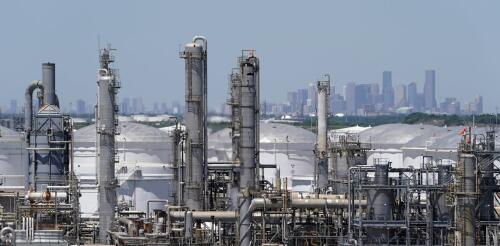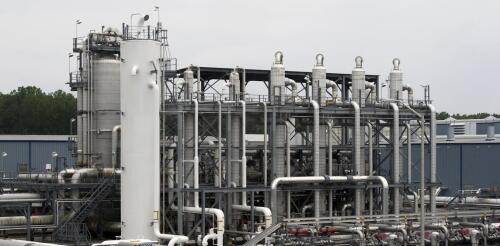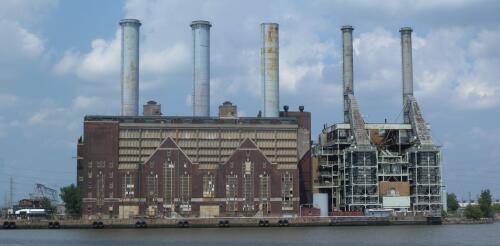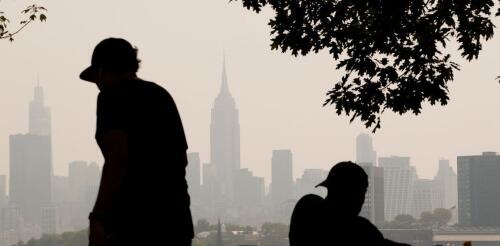Environmental justice
The U.S. Environmental Protection Agency has announced a new standard for protecting the public from fine particulate air pollution, known as PM2.5 because the particles are smaller than 2.5 millionths of a meter. These minute particles can penetrate deeply into the body and have been linked to many serious illnesses. The new rule sets an annual limit of 9 micrograms per cubic meter of air, down from the previous level of 12 micrograms. States will be required to meet this standard and to take it into consideration when they evaluate applications for permits for new stationary air pollution sources, such as electric power plants, factories and oil refineries. Under the Clean Air Act, the EPA is required to set air pollution standards at levels that protect public health. In the four articles that follow, scholars wrote about the many ways in which exposure to PM2.5 contributes to cardiovascular disease, lung cancer, other illnesses such as dementia, and premature deaths. 1. An...
The Biden administration has frozen pending decisions on permit applications to export liquefied natural gas, or LNG, to countries other than U.S. free trade partners. During this pause, which will last for up to 15 months, the administration has pledged to take a “hard look” at economic, environmental and national security issues associated with exporting LNG. Environmental advocates, who have expressed alarm over the rapid growth of U.S. LNG exports and their effects on Earth’s climate, praised this step. Critics, including energy companies and members of Congress, argue that it threatens European energy security and energy jobs in the U.S. Emily Grubert, associate professor of sustainable energy policy at the University of Notre Dame and a former official at the U.S. Department of Energy, explains why large-scale LNG exports raise complex questions for U.S. policymakers. Is the US a major LNG supplier? The U.S. is now the world’s largest LNG exporter...
Recruiting participants for a citizen science project produced a more diverse group when people were signed up through partner organizations, such as schools and faith-based organizations, than when they joined on their own. We used this approach to recruit volunteers for Crowd the Tap, a citizen science initiative that crowdsources the locations of lead plumbing in homes. We signed up 2,519 households through partner organizations, in addition to 497 households that signed up on their own. We recruited households from all 50 states, though the majority came from North Carolina. Our project was initially funded by the Environmental Protection Agency, which led to nationwide sampling, but additional funding from the North Carolina Water Resources Research Institute led to prioritizing sampling in North Carolina. We recruited 2.2 times more Black participants and 2.3 times more Hispanic or Latino participants through partnerships than we did through individual sign-ups. This allo...
The U.S. is nearing the end of one of its hottest summers on record. Across the nation, heat waves have driven peak electricity demand on some days to levels far exceeding seasonal averages. Grid operators rely on so-called “peaker” plants to ensure they will have enough supply to meet these demand surges. Peaker units can start up quickly and at relatively low cost, but they typically burn more fuel per unit of electricity produced than other types of fossil fuel units. Because they are less efficient than other plants, peakers typically run only during high-demand periods. Historically, peakers have run for less than 10% of the year, often for just a few hours at a stretch. Nonetheless, their higher emissions per unit of electricity produced raise environmental and health concerns. As of 2021, there were 999 peaker plants across the U.S., in all 50 states. About 70% of these plants burned natural gas, and the rest were powered by oil and coal. To reduce air p...
Kids born in 2020 worldwide will experience twice the number of wildfires during their lifetimes compared with those born in 1960. In California and other western states, frequent wildfires have become as much a part of summer and fall as popsicles and Halloween candy. Wildfires produce fine particulate matter, or PM₂.₅, that chokes the air and penetrates deep into lungs. Researchers know that short-term exposure to wildfire PM₂.₅ increases acute care visits for cardiorespiratory problems such as asthma. However, the long-term effects of repeated exposure to wildfire PM₂.₅ on chronic health conditions are unclear. One reason is that scientists have not decided how best to measure this type of intermittent yet ongoing exposure. Environmental epidemiologists and health scientists like us usually summarize long-term exposure to total PM₂.₅ – which comes from power plants, industry and transportation – as average exposure...




